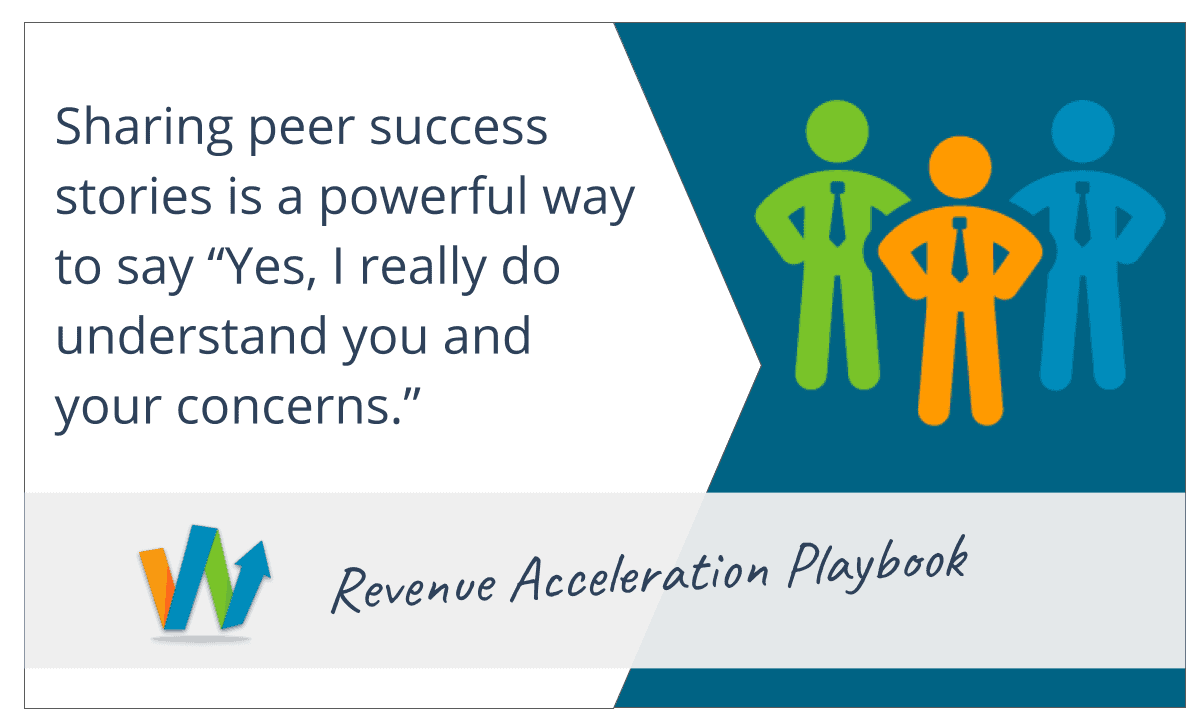 The absolute #1 question in any buyer’s hierarchy of trust is this: Has this company had success working with my peers?
The absolute #1 question in any buyer’s hierarchy of trust is this: Has this company had success working with my peers?
In a recent call with a hospital in the Northeast, I heard Randi-Sue Deckard at BESLER nail the call opening with this simple line: “We are entrenched in the Northeast and work with your peer hospitals Steward and South Coast.”
BOOM! In thirty seconds Randi had moved out of the “vendor trying to sell me something” camp into the “part of the in-group who knows my friends” camp.
Most teams fail to fully leverage the power of peer references, which is a very powerful way to say “yes, I really do understand you and your concerns.”
Here are three simple ways to get better.
Peer Reference Tip #1: Build Top Client Lists by Segment 📚
Sharing client names and stories is a key part of building buyer confidence. During a product presentation we can share specific functionality that aligns to a buyer’s goal, but after this the buyer wants to hear direct evidence of how we can help the buyer’s goal achievement. It is not enough just to claim impact, a buyer wants to see it demonstrated.
By far, the most effective type of evidence is a success story about another customer you have already helped to achieve the desired results. The closer the alignment is from the success case to the buyer’s goal area, buyer role and market segment the better.
- To support quickly getting to the right client references and stories, work with your team to identify your top five or six clients for each of the key market segments you serve. Market segments could be based on an industry vertical, organizational size, region or some other factor.
- Then, have each of your go-to-market team members, including those in Sales, Account Management and Customer Success pick their top client references, by segment, from this list.
Peer Reference Tip #2: Create Actionable Success Stories 📣
Most companies have case studies that sit on a company website or live in highly formatted PDF files. These case studies have tremendous value later in the sales cycle. When a company gets to the point of considering a proposal from a vendor, the sales process expands. It starts to include new decision-makers, such as a Chief Financial Officer or Vice President in a related department, who may not join the sales discussions directly. For these indirect influencers or decision-makers, the case study format works well. Each person can choose how and when to consume digital case studies on a website or in an email attachment.
However, to unlock the power of client references, case studies need to be translated into success narratives that can be verbally shared in sales conversations.
- Turn your case studies into actionable success stories that can be summarized in three bullet points that focus on the client’s story before and after their work with you.
- Make these into success story slides that are easy to use in sales or customer success calls.
Peer Reference Tip #3: Practice for Each Step in the Buyer Journey 👍
As buyers move through the evaluation process and through to a decision, they have varying levels of interest in engaging with a buyer’s content depending upon where they are in their process. Peer references and client stories need to be aligned to each phase of the buyer journey.
Buyers in early discovery look first for quick insights or evidence that you have helped peers with similar goals and challenges. In active evaluation, they want to see how you tailor to their specific needs. And, finally, when in a purchasing mode, they look for demonstrated expertise to de-risk a purchase decision for themselves and their organization as a whole.
Early Discovery: To support early discovery, you should have your prospecting, sales, account management, or customer success team members practice quickly identifying good peer matches from their top customer lists for particular buyer situations.
- For their prospecting outreach, ask “what is the short list of similar clients you plan to share?”
- For their discovery call preparation, ask “what are our two or three most similar customers?”
Later Discovery and Evaluation: For buyer engagement in the discovery and evaluation phases, have your sales, account management and customer success teams identify their top two client success stories for each buyer goal area.
- As they prepare their stakeholder and decision group calls, ask “if they are interested in goal area X, what customer success story slides are you going to share?”
Decision-Making: For building trust in the decision-making phase, have your sales, account management and customer success teams identify their top formal success cases that may also serve as customer references.
- As they prepare their proposals, ask “if you get to a fit with the decision-making group and they ask for a proposal, what case studies or client references will you share?”
Never forget that nothing grabs a buyer’s attention quicker than telling them that you have been successful with a customer who is just like them.
